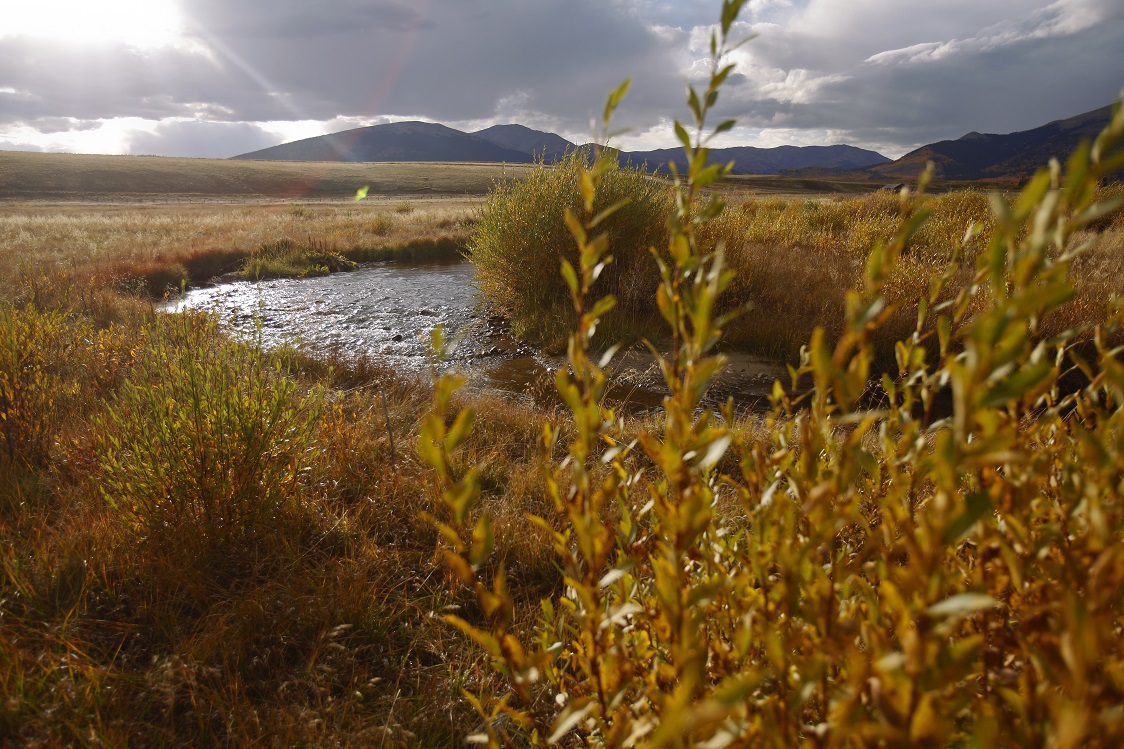Throwback Thursday: From the Archives
Creek at Tarryall Notch, restored by Beartooth Capital. Photo © Turner & Fitch
Last week, we released our latest issue of PERC Reports, inspired by Aldo Leopold, and highlighting examples of private conservation in the public interest. In the August 1997 edition of PERC Reports, Linda Platts compiled examples of private conservation initiatives from around the United States. Looking back, we can’t help but notice the parallels.
Then: Wolf Country Burgers
To gain “cooperation from Montana ranchers who had opposed wolf reintroduction,” Defenders of Wildlife “offered to stamp beef products from the region with the label ‘Wolf Country Beef.’”
Following the “Dolphin Safe Tuna” model, the environmental group’s plan was to “then help ranchers market their beef and sell it at a premium to consumers who support wolf reintroduction.”
Now: Wild Sky Beef
Wholly owned and operated by the American Prairie Reserve, Wild Sky Beef is a brand of grass-fed and finished beef whose premium prices help cover the costs of replacing barbed wire with wildlife-friendly ranching practices. The Wild Sky Beef business model is designed to increase tolerance for wildlife.
Then: Power Plant Pollution Buy-Out
The Conservation Law Foundation of Boston bid for 18 power plants from New England Electric in an effort to reduce smog in the area. The foundation president saw the opportunity to buy and either close or modify polluting power plants as a powerful new tool to clean up the environment.
Now: Power Plant Partnership for Wetland Restoration
Jeff Laszlo of the Granger Ranch in southwest Montana set out restore wetlands on his ranch. Wetlands sequester more carbon than forests, and PPL Montana (now Northwestern Energy) wanted to offset its carbon footprint. PPL Montana partnered with Laszlo to provide the initial funding to turn irrigation channels back into a natural wetland.
Then: Corporate Habitat
Employees of Monsanto Co. used an in-house grant to form a land stewardship team. They fulfilled their promise to “manage all corporate real estate to benefit nature” by restoring wetlands, planting native prarie, and monitoring bluebirds. The company also donated a former plant site to be used as a bald eagle sanctuary.
Now: Conservation Credits
Ridge Top Ranch in California was once a landfill, but the LandBank Group has turned it into a home for endangered frog and butterfly species. The company receives conservation credits for providing habitat for the frogs and butterflies. Developers who harm endangered species habitat are required to offset those impacts, and can do so by purchasing conservation credits from the LandBank Group.
From its beginning, PERC has told the stories of private conservation in the public interest. We understand that the power to do the most good for the environment rests with private enterprise. Whether they do good because of personal conviction or the incentive of earning a dollar, private resource managers provide the same environmental benefits.
As Terry Anderson explains, PERC’s private conservation initiative is rooted inAldo Leopold’s idea that “Conservation will ultimately boil down to rewarding the private landowner who conserves the public interest.”
Private landowners are crucial to everything from protecting sage grouse in “The New West” to water conservation in Bolivia. In the end, private conservation isn’t just a good idea, it’s also good business, with private landowners incentivized to restore their land under “… the prospect of a different kind of green, the almighty dollar.”
As PERC’s research on conservation has shown over the past 35 years, government policies that attempt to force private landowners to produce public goods often backfire. The environment benefits most when we allow landowners to engage in their own private conservation efforts and reward them for providing public benefits.
Read the original article in full here.




